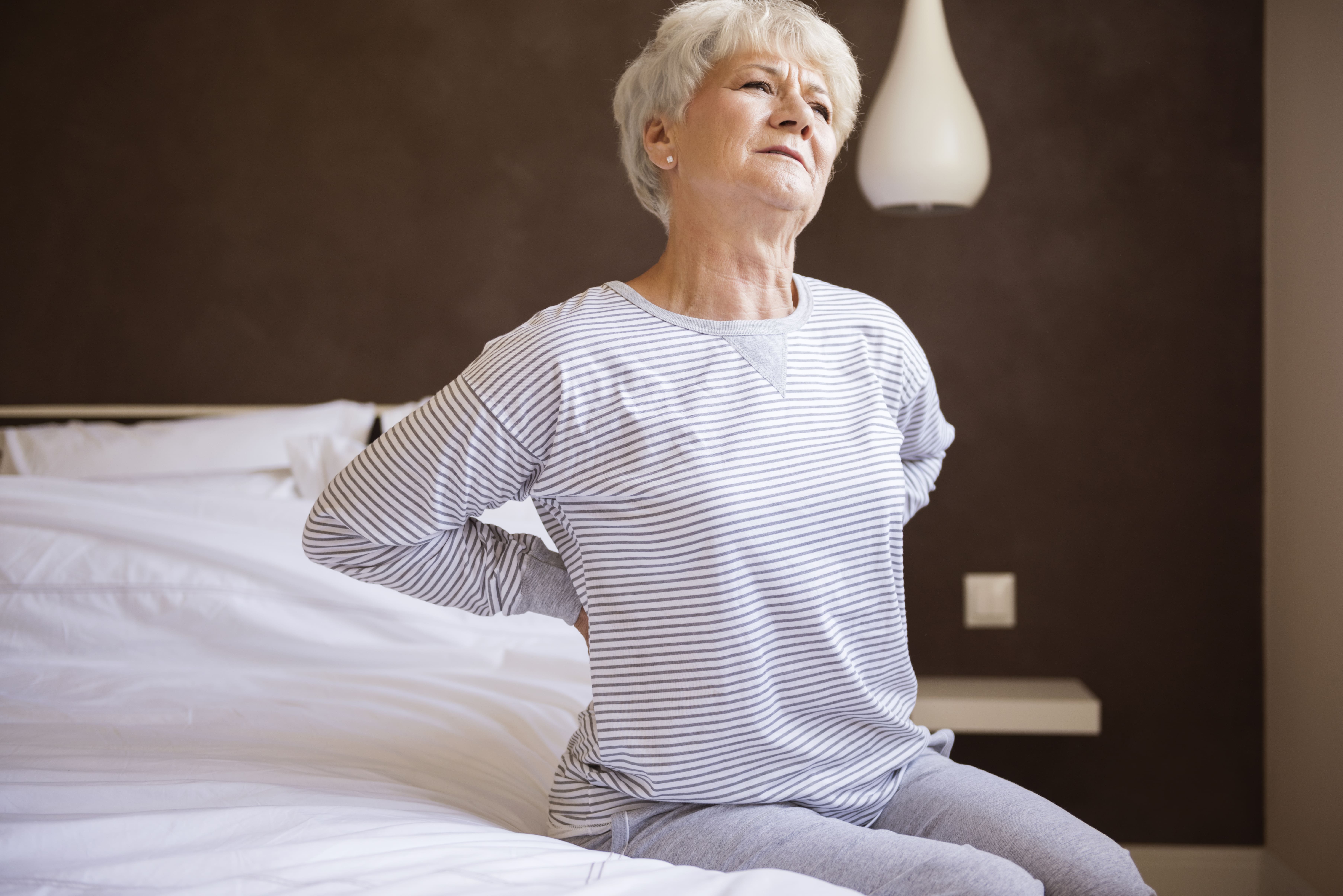Asset Publisher
A Healthy Back for a Healthy Body: Tips for Managing Back Pain
06/11/2019

An older woman struggling with back pain as she gets up from bed ┃ Image by gpointstudio
As we age, we may find ourselves suffering from stiff, painful backs that may prevent us from taking part in the active lifestyle we may have enjoyed when we were younger or healthier. If so, we are not alone. Back pain is one of the most common reasons older people visit their doctors for a back exam, diagnosis, pain relief and treatment.
Back Pain: Risk Factors
There are a variety of factors that can lead to back pain. Older baseball players, tennis players, bowlers and other sports enthusiasts often strain back muscles during a game, especially if they don’t warm up properly or haven’t played in a long time. Stress can also cause back muscles to tense up. Smoking has been linked to chronic back pain, and side effects of certain medications can weaken aging bones.
Other everyday activities that can bring on back pain include:
- Poor posture
- Lack of physical activity
- Being overweight
- Arthritis, knee or back surgery
- Accidents and falls
- Overdoing household chores or yard work,
- Emotional stress and depression that causes tense neck and back muscles
- A family history of back pain
Back Pain: Symptoms & Causes
Chronic back pain can make it painful for an older person to stand for even short periods of time.
Other symptoms include:
- Aching muscles
- Shooting pain in the legs
- Stiffness or limited flexibility in the back
- Difficulty standing up straight
- Osteoporosis, a painful bone disease that increases the risk for fractures in the back of an older person. Although this condition most often occurs in older women, it can also affect older men.
Managing Back Pain
The good news is that back pain in older adults can often be managed at home with a variety of lifestyle changes and the help and support of family or friends.
If we are caring for a loved one with a back pain, we should encourage them to:
- Schedule regular checkups with a doctor. They should see a doctor immediately if their back pain becomes worse
- Sleep on a comfortable mattress
- Wear supportive, low-heeled shoes
- Stop smoking
- Maintain a healthy weight. Extra body weight can put stress on our backs and other joints.
- Use chairs with good lower back support. For additional support, we can add a rolled up towel or pillow behind the small of our loved one’s back.
- Eat foods high in Vitamin D, calcium fortified foods or a calcium supplement if recommended by the doctor.
Workouts for Painful Backs
Regular exercise may help reduce our loved one’s back pain and improve their flexibility, endurance, strength, balance and overall health. We should always check with their physician before they begin an exercise program, especially if they have other chronic illnesses or have not been physically active. The doctor may also refer our loved one to a physical therapist who can plan exercise routines most suited to their condition. Surgery is less commonly recommended, but the doctor may discuss this as an option if standard treatments, home remedies, exercise and physical therapy fail to control painful symptoms.
At the beginning, we should be sure to keep exercise brief and manageable. Activities we can participate in together with our loved one include:
- Exploring our neighborhood
- Swimming
- Easy stretching exercises
- Raking leaves, pulling weeds, dusting furniture and other easy house or garden chores
- Shopping excursions
- Visiting a nearby park
Back Pain: The Good News
Unlike many other disorders, back pain can often be managed successfully at home with the care of friends, family members and expert treatment provided by health care professionals. There is much we can do as caregivers to support our loved one in reclaiming their ability to do the things they love with as little pain and discomfort as possible.
Related Assets
Suggested Reads
Living Well with Arthritis
According to the Arthritis Foundation, about 54 million adults have been diagnosed with arthritis. The first signs of arthritis usually begin around age 40 and progress slowly. Women over 50 are more likely to suffer from arthritis symptoms than men. Even dogs,...
Pain Management for Older Adults with Dementia
Just like most other older adults, people with Alzheimer’s and related types of dementia suffer from headaches, stomachaches, toothaches, muscle cramps and other painful conditions that are an uncomfortable part of the aging process. However, an older person w...
